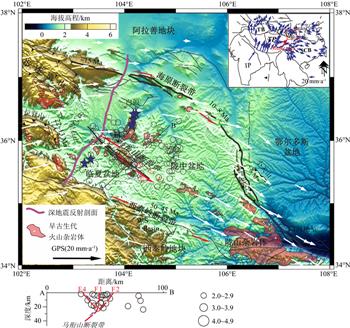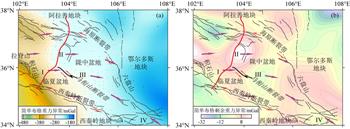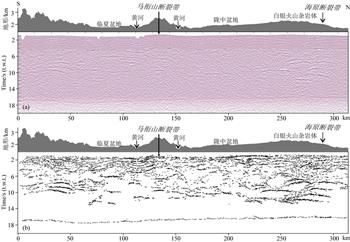| 青藏高原东北缘马衔山断裂带构造属性的综合研究 |
| |
| 引用本文: | 郭晓玉, 高锐, 高建荣, 徐啸, 黄兴富. 2018. 青藏高原东北缘马衔山断裂带构造属性的综合研究. 地球物理学报, 61(2): 560-569, doi: 10.6038/cjg2018L0186 |
| |
| 作者姓名: | 郭晓玉 高锐 高建荣 徐啸 黄兴富 |
| |
| 作者单位: | 1. 中山大学地球科学与工程学院, 广州 510275;; 2. 中国地质科学院地质研究所, 北京 100037;; 3. 中国石油勘探开发研究院, 北京 100083 |
| |
| 基金项目: | 国家自然科学基金项目(41674087,41430213,41590863)资助. |
| |
| 摘 要: | 
左旋走滑的马衔山断裂带位于青藏高原东北缘陇中盆地内部,呈北西-南东向伸展.宽约8~10 km,长约115 km.马衔山断裂带表面虽然局部已被黄土覆盖,但并不代表它的活动性不强.1125年的兰州MS7.0地震就发生在马衔山断裂带北缘的西侧.前人对马衔山断裂带的研究基本上多依靠于地表地质和地球化学数据分析进行一般性讨论,而缺少对马衔山断裂带深部构造伸展的清晰认识.
本文中,我们主要依靠一条横跨马衔山断裂带的深地震反射剖面数据资料进行地壳尺度的构造解释.在此基础之上,对研究区所获得的重力数据进行相应的处理分析.最后辅助于马衔山断裂带两侧野外地表形变的观察和前人研究所获得的地球化学数据分析,我们的研究认为马衔山断裂带为一不同块体间的边界断裂带.它可能形成于早古生代祁连造山带东缘北部马里亚纳式岛弧和南部日本式岛弧的相互拼贴作用.该边界断裂带在随后的青藏高原东北缘物质逃逸过程中被激活,并且目前仍处于构造活动活跃期.

|
| 关 键 词: | 马衔山断裂带 区域重力异常 深地震反射剖面 综合地球物理解释 块体边界 |
| 收稿时间: | 2017-06-24 |
| 修稿时间: | 2017-11-08 |
| 本文献已被 CNKI 等数据库收录! |
| 点击此处可从《地球物理学报》浏览原始摘要信息 |
|
点击此处可从《地球物理学报》下载全文 |
|



